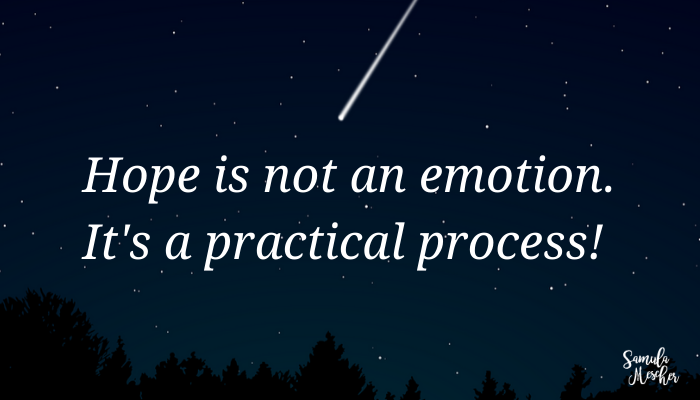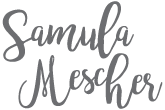
Hope is not an emotion. It is a practical process!
Many years ago I learned from Brene Brown that hope is not an emotion (like a warm feeling of optimism and possibility). Instead hope is a way of thinking, a cognitive process. Actually, the idea that hope is a practical cognitive process already made me more hopeful. Hope felt less like something you had or not. Hope became something I could actively bring more into my life.
Hope is not about wishing on a star.
Hope is actually a practical process that can help you deal with hardship, doubt, fear. Hope can help you reach your goals. And in these extraordinary times where there is so much uncertainty, fear and change going on I think the thought process of hope can give us practical guidance. I think we need this thought process to navigate the coming months.
I don’t know how it is for you, but at the beginning of the lockdown here in the Netherlands it felt like a very temporary situation, and we would go back to normal after this temporary situation. Now this temporary situation seems to become a much longer temporary than I expected at first. Moreover, going back to normal might not be so normal after all and will involve many changes. Wherever you are in the world, these changes will keep on effecting your daily life and the way you work.
Hope can help you navigate this new reality and help you come up with practical actions and steps to reach your goals.
“Hope is a thought process made up of three elements: goals, pathways and agency.
Hope happens when:
1. We have the ability to set realistic goals ( I know where I want to go)
2. We are able to figure out how to achieve those goals- including the ability to stay flexible and develop alternative routes. (So this is about persistence, tolerating disappointment and trying again)
3. We believe in ourselves (I can do this)” (Brene Brown (2010), The gifts of imperfection, p.65)
This process can help us to reassess our goals, to find new and creative ways to reach them and it can help us working towards them. In other words develop a plan B or C and help us taking steps to reach these goals. Alternative plans to be able to do your research. Alternative plans to find yourself a new job this year. The hope thought process can help you with that.
Putting the hope process into action:
1. How realistic are your goals given the constraints, time and resources you have available right now? What is possible right now in these circumstances? So reassess the goals you set for this year. But please don’t throw everything in the bin! – this is were parts 2 and 3 come in.
2. Developing alternative routes
Plan B or C to find a new job:
Maybe your goal was to find yourself a new job this year. Instead of thinking that this is not possible in these circumstance (hopelessness!!), come up with a plan B or C.
Given these new circumstances how could I go about finding myself a new job?
What actions are possible in these different circumstances?
E.g. Setting up online networking conversations. Or finding out what new and different help and skills are needed because of COVID-19/lock down and how this creates new/different opportunities for you.
Plan B and C for your research
Plan B: how to do your research with significantly restricted/delayed data gathering? What can you do right now with the data you already have? What other work can you do now, so you will free up time to later double down on data gathering?
Plan C: Research you can do using only remote resources. What articles can you write, what research can you do when you make use of remote resources? What different ways of gathering data can you turn to?
For example: in the first year of my PhD research I did not have any data yet, but I did want to write an article every year. My research was on work-life balance support in organisations and my researchplan involved casestudies with datagathering through interviews and observations in different organsiations. But I was still in the process finding and contacting possibly suitable organisations. So this first year I turned to an alternative data source: company websites. I analysed how WLB support was represented on company websites. Resulting in a publication in an highly ranked journal!
3. Believing in yourself
Practical steps you can take to believe in your self are being mindful of your selftalk and taking a look at the strengths and resources that are available to you.
Selftalk:
Be conscious about your self talk. Saying things like “This should be easier, it is only hard and slow because I am not good at this”, is not helpful. Hopeful (and helpful) self- talk sounds like: “This is hard, but I can do it .“ “It might be difficult and slow, but I can do this.”
Your resources:
Make a list of strengths and resources that are available to you.
- Look back on earlier successes, or how you navigated difficult situations before. What helped you then? What strengths and skills did you use?
- Available resources can be:
o People : who can you ask for help or input?
o Knowledge you have
o Informational resources
o Time
o Money
o Your network/connections: who can connect you to information or people?
Hope gives you power. The power to deal with difficulties, the power to effect changes in your life.
Cultivate hope by taking practical action!






Geen reacties